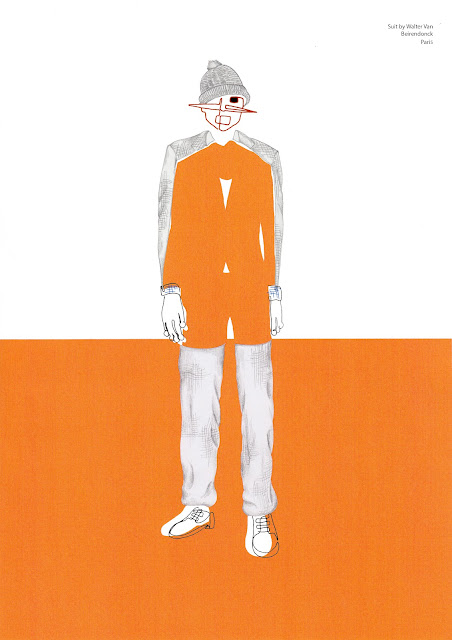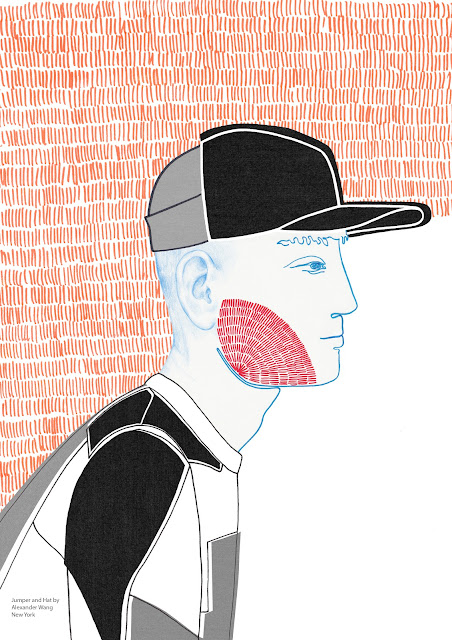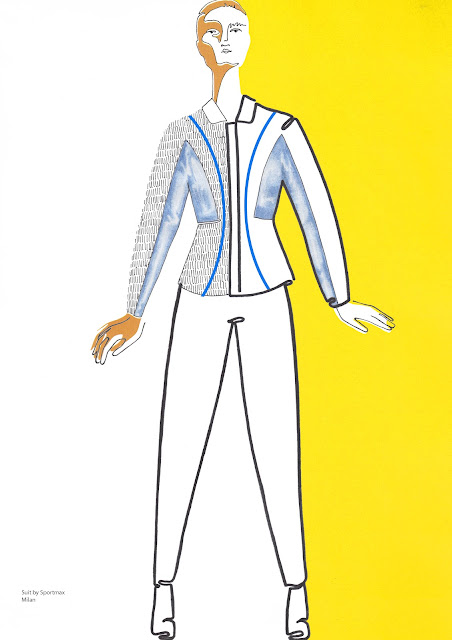S H O P R E P O R T
By
F L O R A P E T T I T T
the super-ordinary vs. something out
of the ordinary
Muji was founded in the early
80’s in Japan with the basic principal of providing ‘no brand quality goods’.
The materials Muji uses are specially sourced from all over the world to be
economical and recycled where possible, whilst all the time maintaining a high
standard of quality.
Products do not carry a brand name but
are usually instantly recognisable by Muji’s distinct aesthetic quality, a
direct contrast to most retailers today where people buy products because of
the brand name and the status that comes with the label. Muji has done many
collaborations with famous designers, including Yohji Yamamoto, but does not
usually disclose which products are made by who, Yamamoto was not even
mentioned on the white ‘labo’ collection label, this again puts all the
emphasis on the quality of the product rather than the brand or designer’s reputation.
The clothes are simple and
carefully thought out. The colour palette, like the rest of the shop,
reinforces the overall brand identity; white, black, grey navy blue and beige
with the occasional detail of red. Of course Muji could be seen as bland or
boring to those who prefer more variety of colour and visual stimulation.
The shops themselves –of which there are over 300 worldwide-
have a very distinct spacious light quality to them. Items are stacked neatly
in rows and columns and separate compartments on ceiling high shelves lining
the walls, and clothes hang in orderly little groups interspersed with other
products.
They are reasonably priced with women’s
jeans for £36 and a striped boat neck top at £29. The shoes come in very simple
sizes; Small Medium Large XLarge. Some of the shoes are unisex, the only
difference being that the women’s are sizes 4.5-6 and the men’s carries on from
7-9. The cheapest shoes are the Unisex flip flops starting at £2.45 a pair.

It is unofficially acknowledged
that your obsession with Muji starts with the stationery, buying beautifully
simple matching pens and notebooks which quickly morphs into buying a few
kitchen implements and before you know it you’ve kitted out your wardrobe and
house in Muji products.
Irregular Choice is more expensive than Muji; a cotton jersey sweater with printed image for £79.99 and shoes that vary from around £60 to £80 for a standard pair of heels, and up to£260 for collaborated designs.
Irregular Choice was created in 1999
in Brighton by Dan Sullivan, their philosophy is to maintain and champion
creativity and individuality. Where Muji is all about minimising unnecessary
design features and excessive decorations, Irregular Choice can’t wait to pile
it on. As well as shoes they sell bags, clothes and other accessories all of
them covered in pattern, colour, glitter and frills.
The stores are vibrant and
energetic, each one is done up differently with the intention of transporting you
into a whimsical other world, the walls and floor are decorated in colourful
designs and the shelve on which the shoes and bags sit are covered in mirrored
tiles.

Frivolous and extravagant, one
could say that Irregular Choice shoes add a splash of excitement into mundane,
stressful everyday life whereas Muji provides products that introduce calm and
peace into their customers’ lives. Shopping at either Muji or Irregular Choice
is seen as a definite lifestyle choice; Irregular Choice appeals to people with
an eclectic sense of style –the shoes and clothes are so lavishly decorated
they are unlikely to ‘go with’ or match many outfits the customer already has.
This is the polar opposite to Muji in which the aesthetic style is so neutral
that anything bought from there, be it clothing, shoes or bed linen
automatically goes with everything else from there because the overall theme of
minimalism and colour palette are so strong.

Both brands’ London shops
-irregular choice on Carnaby Street and Muji on Oxford Street, are painted red
and yet still manage to convey completely different atmospheres. The flowers,
scrawled typeface and glossy bright red paint of Irregular Choice are utterly
different to Muji’s matte, dark red and deliberately simple exterior of
straight lines and large glass display window.
The one thing the two brands do have
in common is that neither of them particularly follows trends. While the shops
around then slavishly follow the latest fads and styles to try and attract more
consumers, these two rely on the cult-like following of loyal customers -built
up in the majority by word of mouth- to keep them going. The clothes will vary
from season to season but Muji will always provide simple, well designed basics
and Irregular Choice will always produce flamboyant brightly coloured shoes.


































